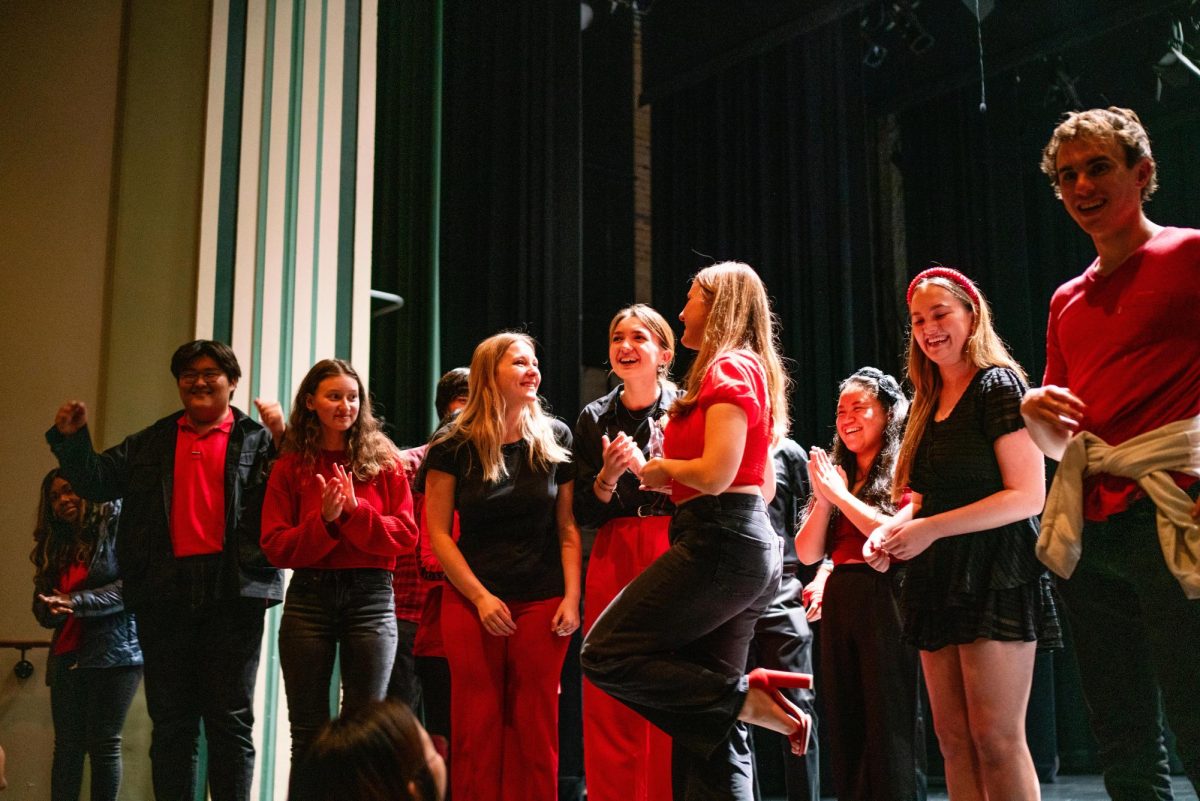On Feb. 21, 2007, I stood at attention inside the Assembly Hall as Chief Illiniwek performed his final halftime dance. Wearing a gray shirt with a black Chief logo on it, I felt a mix of anger and sadness that the Chief was being retired.
Five years later, I write to try and explain how misguided those emotions were.
Having been born and raised in Champaign, I’ve attended University of Illinois athletic events my entire life.
As I become ever further removed from my childhood, I barely remember specifics of any Illinois football game before the Ron Zook era. But among flashes of blue jerseys and fireworks and Jim Turpin’s emphatic declarations of “First and 10 for the Illini!” I clearly and nostalgically remember seeing Chief Illiniwek dance.
It says something that the two-or-so minutes per game I spent watching the Chief now hold equal, if not more, weight in my memory as the 60 minutes of football and 40 of basketball.
Get The Daily Illini in your inbox!
It was a transcendent feeling; each home game during the “Three-in-One,” the Chief’s open arms would welcome thousands into the university community in a more powerful way than could Alma herself. Crowds would rally around the University of Illinois, and the middle-man in that relationship was Chief Illiniwek. The Chief of the modern era truly was a symbol, not a mascot.
Unfortunately, he was also a caricature whose existence harmed Native Americans.
Growing up, I never understood what that meant. Those who looked to rid Illinois of 80 years of tradition spoke vaguely of racist stereotypes, yet failed to effectively articulate what those were. It didn’t help that for every sporting event attracting tens of thousands supporting the Chief, there would be about 10 protesters outside.
Then my freshman year at this University arrived. For Rhetoric 105, I was required to write a 20-plus page research paper dealing with a racial topic. I picked the Chief. My research question was, “Why are there people who don’t like the Chief?”
By the time I finished that paper, I discovered that the root of the Chief Illiniwek controversy is not necessarily racism, at least not anymore. It is misinformation. Everything about the pro-Chief argument suggests a complete obliviousness to Native American culture and U.S. history.
The Chief was named Illiniwek and used to represent the Fighting Illini. Yet his image is that of a Sioux Indian. Does it make any sense to have a Sioux Indian represent the Illini, who looked completely different? That’s like having a leprechaun represent the English or a Prussian officer represent the French, while expecting all white Europeans to relate.
The Chief was not created to honor anybody. He was created because he looked badass.
Assuming it is not insensitive to have a Sioux Indian represent the entire Native American race, the Chief’s usage is also inappropriate, because chiefs don’t dance.
It does not matter how accurate the Chief was or where his regalia originated. The mere fact that he danced for entertainment shows a blatant misunderstanding of the very culture he was supposedly honoring.
A popular argument favoring the Chief is that there is unfairly no Illini tribe to endorse him. And that is correct insofar as that there was never an Illini tribe.
Long ago in the Midwest, there was an Illini Confederacy consisting of several tribes allying together to defend themselves against Europeans and other tribes.
One of the tribes in the confederation, the Peoria,still exists in Oklahoma and supported the Chief until realizing he was a Sioux Indian (and that he danced, etc.).
Almost all Native Americans disapprove of the Chief upon learning how he was used. The reason behind the perceived lack of consensus is that there are simply not very many Native Americans, and many culturally practicing ones are isolated on reservations.
Especially in Illinois, where it was illegal for Native Americans to live after the exclusion acts (hence the Peoria now living in Oklahoma), very few people would take personal offense to the Chief. So while yes, a huge local majority still favors the Chief, nearly all Native American organizations nationwide that have taken an official stance are against him, including the National Congress of American Indians.
Yes, there are people of Native American heritage who support the Chief. But if those people are unfamiliar with the previously mentioned factual shortcomings, they are not any more qualified to form an opinion than anyone else.
So why is there so much misinformation? Why are people so vehemently opposed to the idea that the Chief could be offensive?
Perhaps it is that there is nothing inherently racist or stereotypical about the Chief’s image (it wasn’t always like that, by the way: see the photo with this article).
It is easy to see what may be controversial about Chief Wahoo’s appearance or the name “Redskins.” But the Chief, as he most recently appeared, fits the dominant perception of what a noble and brave Native American “actually” looks like. Therein lies the problem.
The fact that people do not realize what was wrong with the Chief is itself the issue. “He isn’t bucktoothed or red-skinned; he looks like a chief. What’s the big deal?” “He’s an Indian; Indians dance, what’s the big deal?”
Those misconceptions are that of fact, not opinion. There is no argument; Chief Illiniwek insults the vast majority of Native Americans because of the misinformation about Native Americans that his existence perpetuates. His shortcomings are facts, not opinions, and to overlook those facts is to endorse a stereotype.
Supporters commonly argue that Native Americans’ invisibility necessitates the Chief, who was purposed with paying homage to them. But as the previously mentioned factual shortcomings show, there is literally no Native American in history who could have directly identified with the Chief.
If some Chinese athletic team decided to have an American mascot who was egregiously overweight and rude, you as an American may or may not be offended, but you would have to concede that China’s doing so could, over time, shape the Chinese perception of Americans — few Chinese people would ever actually meet an American to break the stereotype. How would they know any better?
The Chief’s status as a “positive” stereotype does not validate its status as such. The Catholic community at Notre Dame identifies with and embraces the Fighting Irish imagery because it created it. Native Americans rarely have any say in how they are portrayed as mascots.
Since arriving at the University, I have refrained from publicly getting political about anything: doing so is frowned upon in journalism.
Yet something journalism prides itself on is thorough research and trying one’s best to overcome any personal biases to get as close to the “truth” as possible. It is about finding and providing the facts that best allow a reader to make informed opinions.
I know of few controversies that have created more misinformation than that of Chief Illiniwek.
People’s natural tendency is to believe things because their parents believe them or because they have always believed them — because they are tradition. Traditions like Chief Illiniwek rely on a lack of information to exist. The Chief represents nothing more than what his creators imagined Native Americans as, and his supporters represent a refusal to acknowledge the flaws of that imagining.
I was as supportive of the Chief as anybody for most of my life. I know more than most the genuinely positive emotions elicited by him. But they are emotions gained at the expense of reality.
The Chief exemplifies how the divisiveness and hostility of misinformation — on both sides, anti-Chief concerns like the opposition to the name Fighting Illini and the Three-In-One are off base — can stoke embers that will burn for many years to come.
Yet I firmly believe that 20, 30 or 50 years from now, the Chief will fall into “What were we thinking?” territory. Now five years removed from his last real dance, I propose that society arrives at that conclusion sooner rather than later.
_Kevin is a senior in Media. He can be reached at [email protected]._








